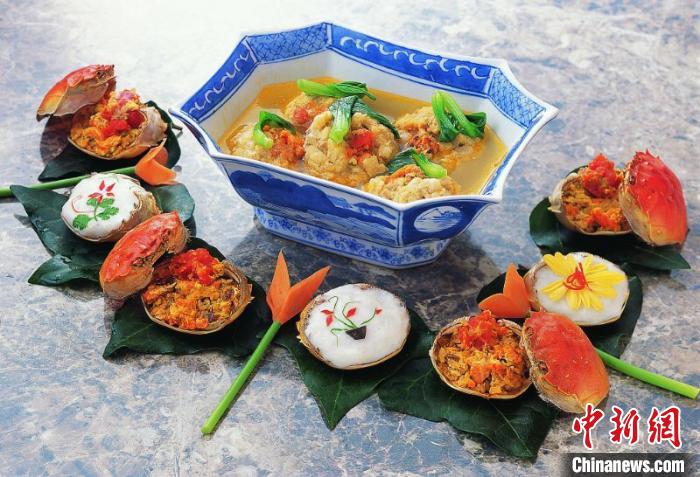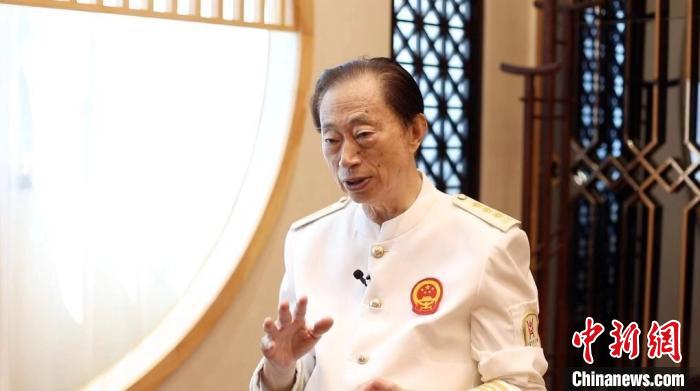

A 79-year-old man has spent his whole life contributing to the popularization of Huaiyang cuisine, according to an article published by Chinanews.com on Oct. 29, 2019.
"I have only done one thing in my life, that is to promote Huaiyang cuisine," Ju Changlong explained. Once he began cooking Huaiyang cuisine, he couldn't stop, he said with a smile.
Huaiyang Cuisine first became popular in the Ming and Qing Dynasties. It enjoys praise as the "best taste in southeast China, the most beautiful cuisine in the world". Huaiyang cuisine, Shandong cuisine, Sichuan cuisine and Guangdong cuisine are known as the four major Chinese cuisines.

Huaiyang dishes (Photo provided by the interviewee)
According to statistics, China has more than 200 food cutting styles. All 200 of these methods are used in Huaiyang cuisine. The most famous dishes which show a chef's knife skills are Pingqiao tofu from Huaian and Wensi tofu from Yangzhou. A piece of tofu must be cut as thin as paper, as thin as a hair, into a diamond shape.
Ju appeared in the first season of A Bite of China, where he introduced Huaiyang cuisine and culture to the public with a Wensi tofu dish. He lived in Japan for 30 years, where he combined Huaiyang cuisine with Japanese food and created the unique "Ju style cuisine."
In 1959, Ju started his cooking career in the canteen of north Jiangsu agricultural college as a cook. In 1971, through technical assessment, he was selected to begin working at the Beijing state guesthouse, to help cook Jiangsu cuisine. Then, in 1975, he moved to the Yangzhou Xiyuan hotel as a chef.
In the spring of 1988, Ju was recommended to a restaurant in Japan to teach cookery. During that time, he found that the knowledge of Chinese food in Japan was limited to Guangdong cuisine, Sichuan cuisine, Beijing cuisine and Shanghai cuisine, but few people knew of Huaiyang cuisine.

Ju Changlong gives an interview (Photo provided by the interviewee)
Ju believes that Huaiyang cuisine deserves a place on the world stage. In Japan, he combined the characteristics of Huaiyang cuisine, which emphasizes flavor and Japanese cuisine, which focuses on form. He thinks that Huaiyang cuisine is a "literati cuisine," which uses specific requirements and practices in ingredients, knife work and taste.
To help more Japanese customers understand Huaiyang cuisine, Ju holds Huaiyang tasting events six times a year. During every event, he cooks the dishes himself, which attracts a large number of people.
"We should always remember where we come from and inherit the Huaiyang cuisine culture," he said. In 2009, when Ju was 70, he returned to Yangzhou and founded the Ju Cuisine Research Office. After traveling back to his hometown, he collected 120 Huaiyang dishes and published them in a book. He also received apprentices from various countries.
"I will stick to the tradition and innovation of Huaiyang cuisine, integrate the advantages of different dishes and Japanese cuisine, and try my best to teach them," added Ju.

 Award-winning photos show poverty reduction achievements in NE China's Jilin province
Award-winning photos show poverty reduction achievements in NE China's Jilin province People dance to greet advent of New Year in Ameiqituo Town, Guizhou
People dance to greet advent of New Year in Ameiqituo Town, Guizhou Fire brigade in Shanghai holds group wedding
Fire brigade in Shanghai holds group wedding Tourists enjoy ice sculptures in Datan Town, north China
Tourists enjoy ice sculptures in Datan Town, north China Sunset scenery of Dayan Pagoda in Xi'an
Sunset scenery of Dayan Pagoda in Xi'an Tourists have fun at scenic spot in Nanlong Town, NW China
Tourists have fun at scenic spot in Nanlong Town, NW China Harbin attracts tourists by making best use of ice in winter
Harbin attracts tourists by making best use of ice in winter In pics: FIS Alpine Ski Women's World Cup Slalom
In pics: FIS Alpine Ski Women's World Cup Slalom Black-necked cranes rest at reservoir in Lhunzhub County, Lhasa
Black-necked cranes rest at reservoir in Lhunzhub County, Lhasa China's FAST telescope will be available to foreign scientists in April
China's FAST telescope will be available to foreign scientists in April